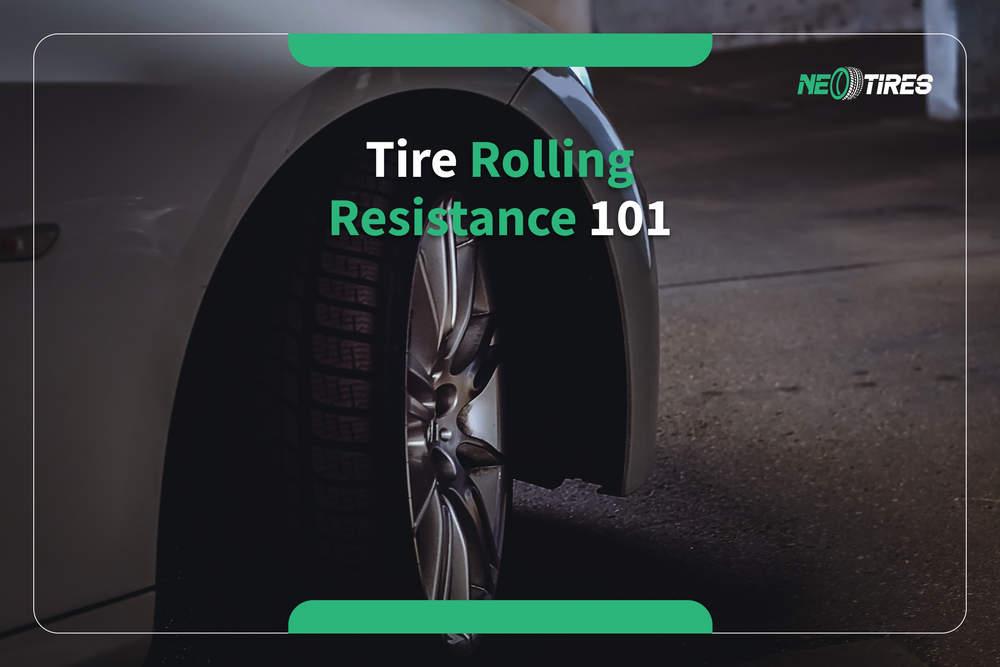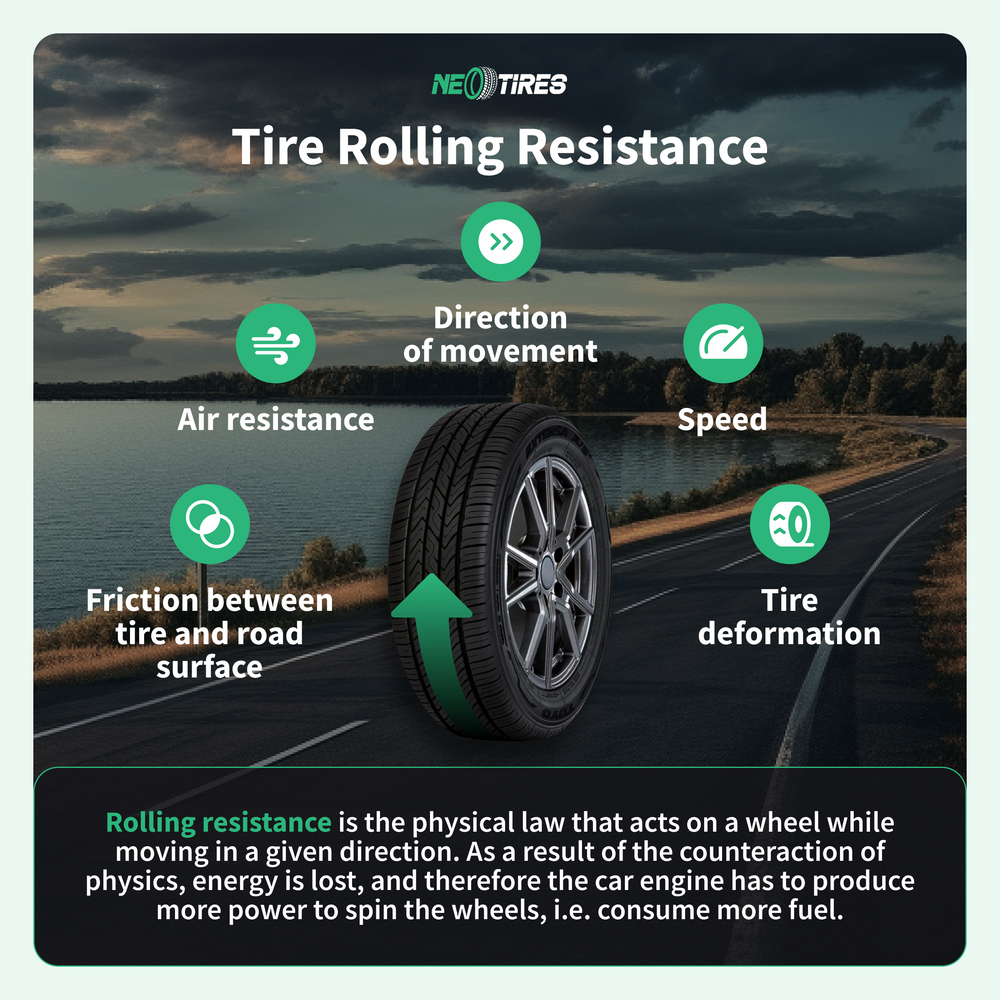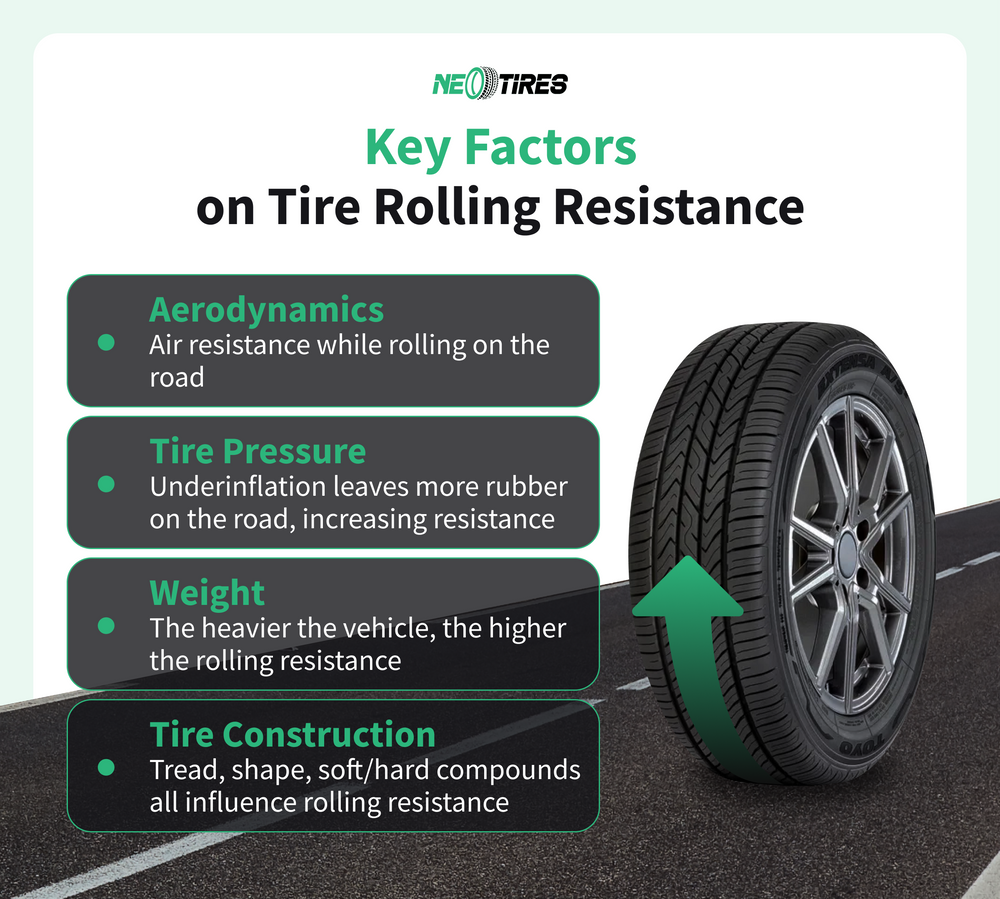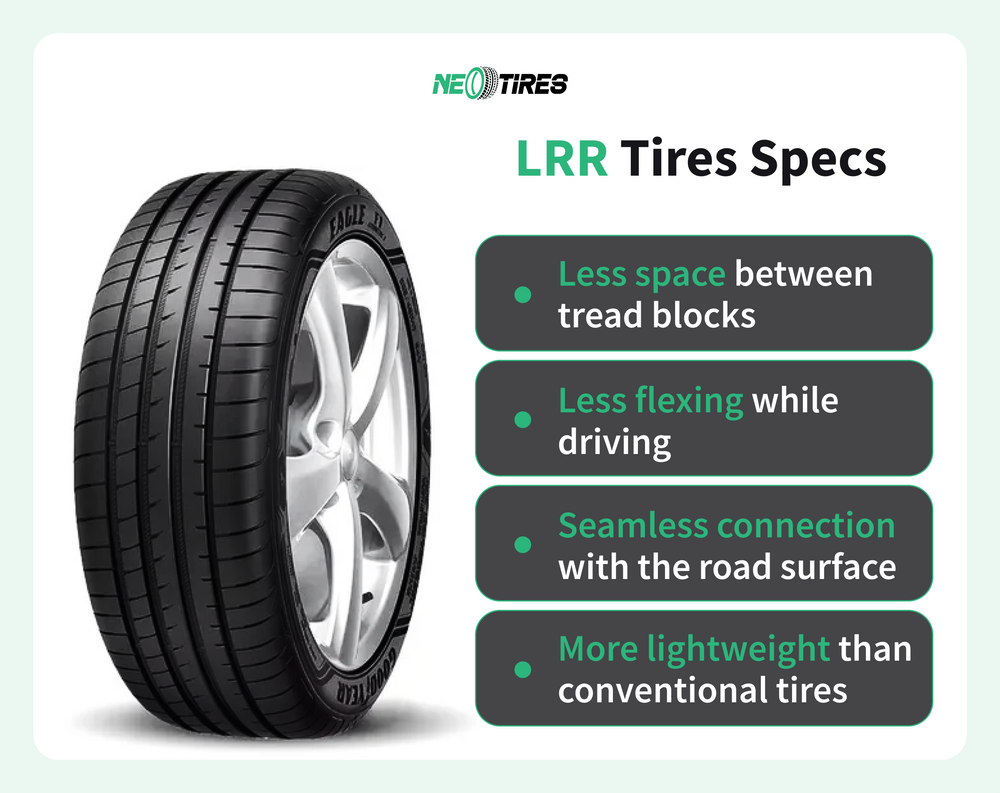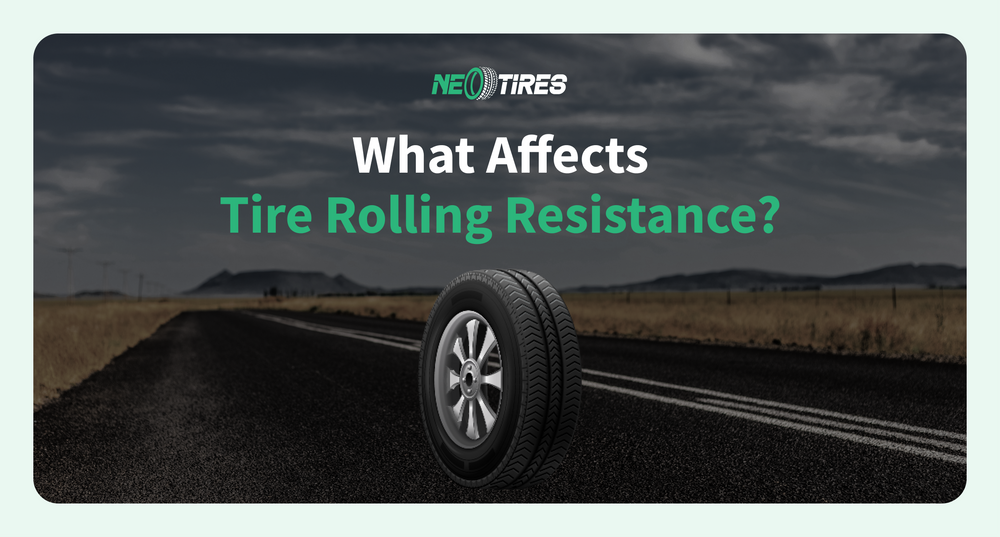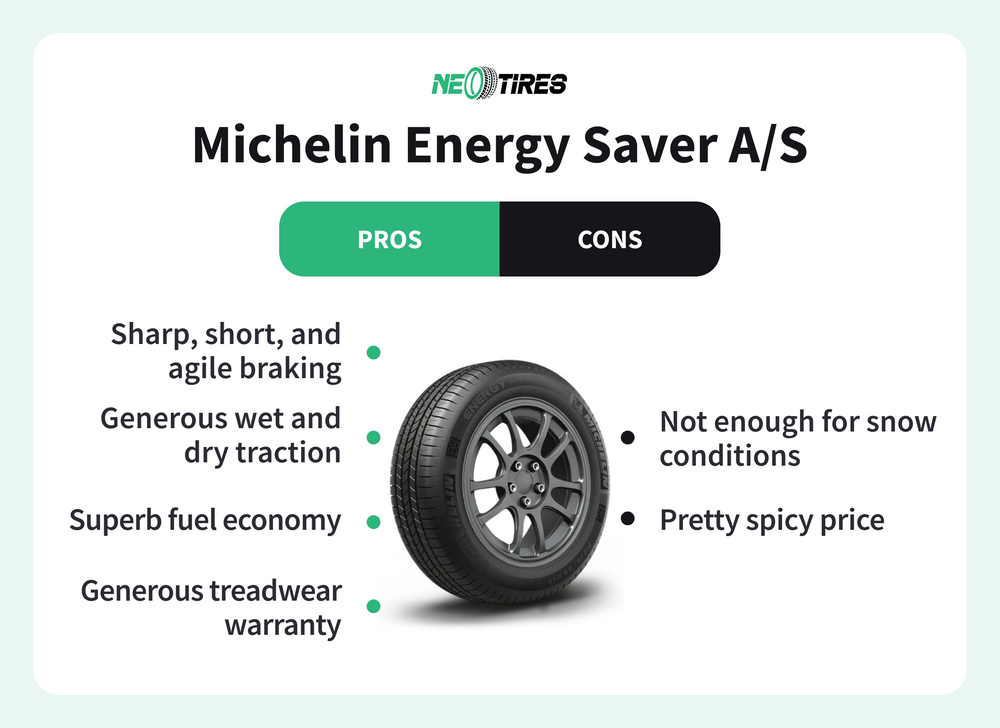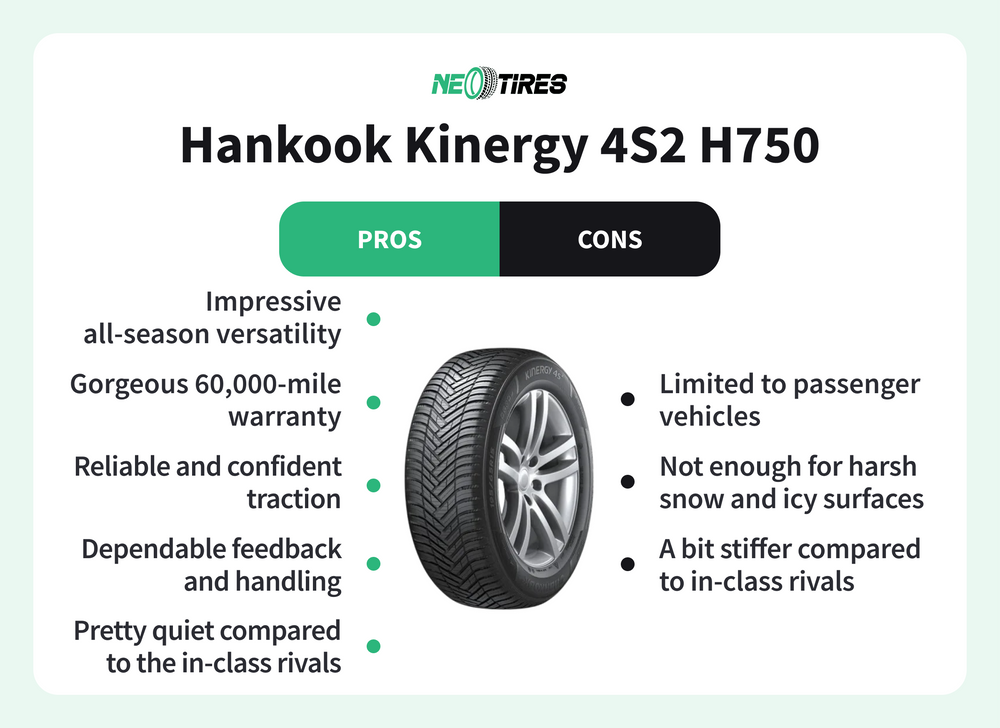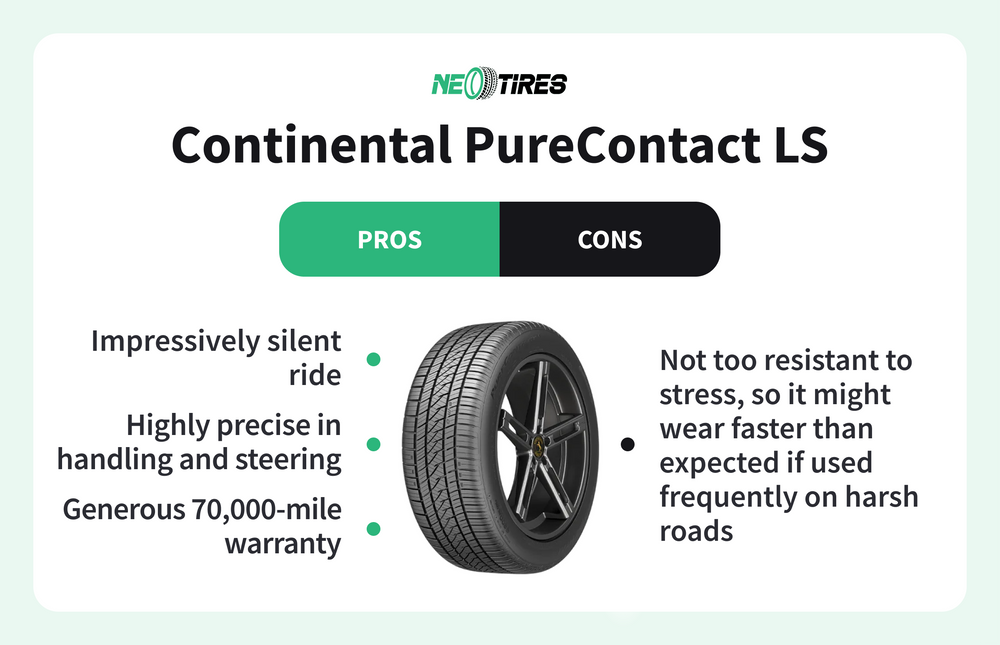Rolling resistance is the amount of energy the tire consumes when it rolls on the road. Higher or lower energy consumption depends on how much the tire deforms while moving and the power the engine exerts while propelling it forward. Factors like tire pressure, size, and tread depth all influence tire rolling resistance and fuel consumption, respectively. This section explores how tires contribute to a vehicle's fuel efficiency, what LRR tires are, and what tires can be considered for low rolling resistance.
What Is Tire Rolling Resistance? Understanding the Basics
Any tire consumes a specific amount of energy while rolling. This energy, otherwise known as rolling resistance, determines how much fuel the vehicle burns. According to the U.S. Department of Energy, a 10% reduction in rolling resistance can improve fuel economy by ~1–2% in passenger vehicles. While moving, the tire uses more or less energy depending on the pressure level, tread (shallow or deep), and size.
Take, for example, two identical tires in the same driving conditions. One is properly inflated (32 PSI), while the other is underinflated (25 PSI). The tire with less air consumes more fuel for the same distance. This occurs because there is more contact patch against the road, which creates more deformation. As a result, the rubber converts energy into heat rather than forward motion, translating into higher rolling resistance.
Factors Contributing To Tire Rolling Resistance
The factors influencing tire rolling resistance include tire size, width, tread depth, and pressure. Lower tire pressure increases rolling resistance; wider tires generally provide higher resistance than smaller diameters; tires with deeper treads typically result in higher rolling resistance.
Tire Pressure
Underinflation causes the tire to make more contact with the road. More rubber on the road means more energy is spent rolling it forward. Higher pressure in tires generally reduces rolling resistance as the contact patch with the road is smaller. Yet, better fuel economy with overinflated tires is a false hope since extra PSI in tires speeds up the uneven tire wear process, leading to early tire replacement.
Tire Size And Width
Wider tires cause more rolling resistance due to greater surface area and additional weight. The flatter and more distributed rubber footprint allows for more deformation during rotation, resulting in more energy lost to heat. Yet, wider tires with high inflation and low rolling-resistance compounds can outperform narrow tires in specific circumstances, but this is not a general rule.
Tire Tread
Tires with deeper treads typically have higher resistance than shallower ones. Rolling resistance generally improves as the tread wears down — though this comes at the cost of traction, especially on wet or snowy roads. With more tread depth, more rubber undergoes deformation during rotation, consuming more energy to maintain forward motion.
What Are LRR Tires?
LLR tires, or Low Rolling Resistance tires, are specially crafted to reduce energy loss while rolling. Due to their specific construction, which reduces deformation, they typically provide less rolling effort than a standard tire, translating into better fuel efficiency. The second key feature of LRR tires is their optimized weight. Special materials used in LRR tires make them more lightweight to achieve less effort and energy consumption in their forward motion.
Best LLR Tires
Tire Rolling Resistance: FAQs
What is Meant By Tire Rolling Resistance?
The effort or energy lost while the tire is moved forward is called rolling resistance. The greater the rolling resistance, the more fuel or electricity (EVs) the vehicle consumes. In the modern industry, tire manufacturers aim to reduce tire rolling resistance through less tire weight and less space between tread blocks to improve driver economy and reduce CO2 emissions.
Is Rolling Resistance Better High or Low?
The lower the rolling resistance, the better. LRR tires can help save about 2-5% of fuel, depending on driving conditions and vehicle. Globally, this drop has a significant impact on reducing gas emissions. In addition, drivers also benefit as they pump fuel less often, reducing their expenses.
What Increases Rolling Resistance?
Several factors influence rolling resistance: tread, tire size and width, and tire pressure. If the tire is not properly inflated, the rolling resistance increases, leading to more fuel consumption.
Is Rolling Resistance the Same as Friction?
These two terms are usually used interchangeably. In fact, rolling resistance is a form of friction, but it specifically refers to energy losses caused by tire deformation — not surface friction like skidding or sliding.
Does Rain Increase Rolling Resistance?
Yes, rolling resistance means the force with which the tire rolls against any liquid or solid surface. Water makes tire rolling more difficult because the tire exerts additional effort to drain the water from its path. The rain contributes to increasing rolling resistance compared to moving on dry land. However, it's worth mentioning that a lot depends on the type and design of the tire.
What Other Factors Affect Rolling Resistance?
Ground conditions & Load conditions
Rolling on loose terrain adds some effort for the tires to move forward. The additional load also increases the rolling resistance because the deeper the tire sinks into the terrain, the higher the effort to keep moving.
Does Extra Weight Affect Rolling Resistance?
Yes, it does. The more weight you put on your vehicle, the more effort it will take to roll on the road. Specialists recommend avoiding overloading the vehicle. Also, drivers must take into account the load capacity of their tires.
What is the Rolling Resistance at Zero Speed?
Zero speed means zero rolling resistance. The rolling resistance force is applied exclusively while in motion. At zero speed, the tire may still support weight (causing static deformation), but it doesn't generate rolling resistance until the vehicle moves. The force starts to manifest in a dynamic state when the speed, road surface, air resistance, and vehicle load influence how the tire rolls on the road.
How Do I Know if My Tire is Low Rolling Resistance?
The LRR tire has shallower tread blocks and thinner sidewalls. In addition, manufacturers use special rubber formulas in LRR tires. All these features work together to reduce the tire rolling effort on the road, which optimizes fuel consumption.
Which Tires Are Recommended For Low Rolling Resistance?
According to Consumer Reports' independent ratings and customer reviews, the following models are among the top options: Bridgestone Ecopia EP422 Plus, Michelin Energy Saver A/S, Hankook Kinergy 4S2 H750, and Continental PureContact LS.
Bridgestone Ecopia EP422 Plus
Michelin Energy Saver A/S
Hankook Kinergy 4S2 H750
Continental PureContact LS
Looking for LRR Tires?
NeoTires can guide you in the matter. Explore our catalog or reach out to us for customized recommendations. With more than five years of experience, our trained assistants will find the best fit that matches your budget and driving needs.
Why trust Us?
The NeoTires team is fully dedicated to reviewing, testing, validating, and ultimately selling the most optimal tires for any need. We self-educate and educate drivers about tires so that they feel safe and secure behind the wheel. We gathered a team of enthusiasts, technical specialists, experts, and content professionals. All together, we dedicate ourselves to offering the highest services and the best products validated by the industry.
With the right tires, you can navigate the most difficult, muddy, and rocky surfaces. Moreover, you can ensure safe driving regardless of the road or weather conditions. Drive safe, and choose your tires wisely!




